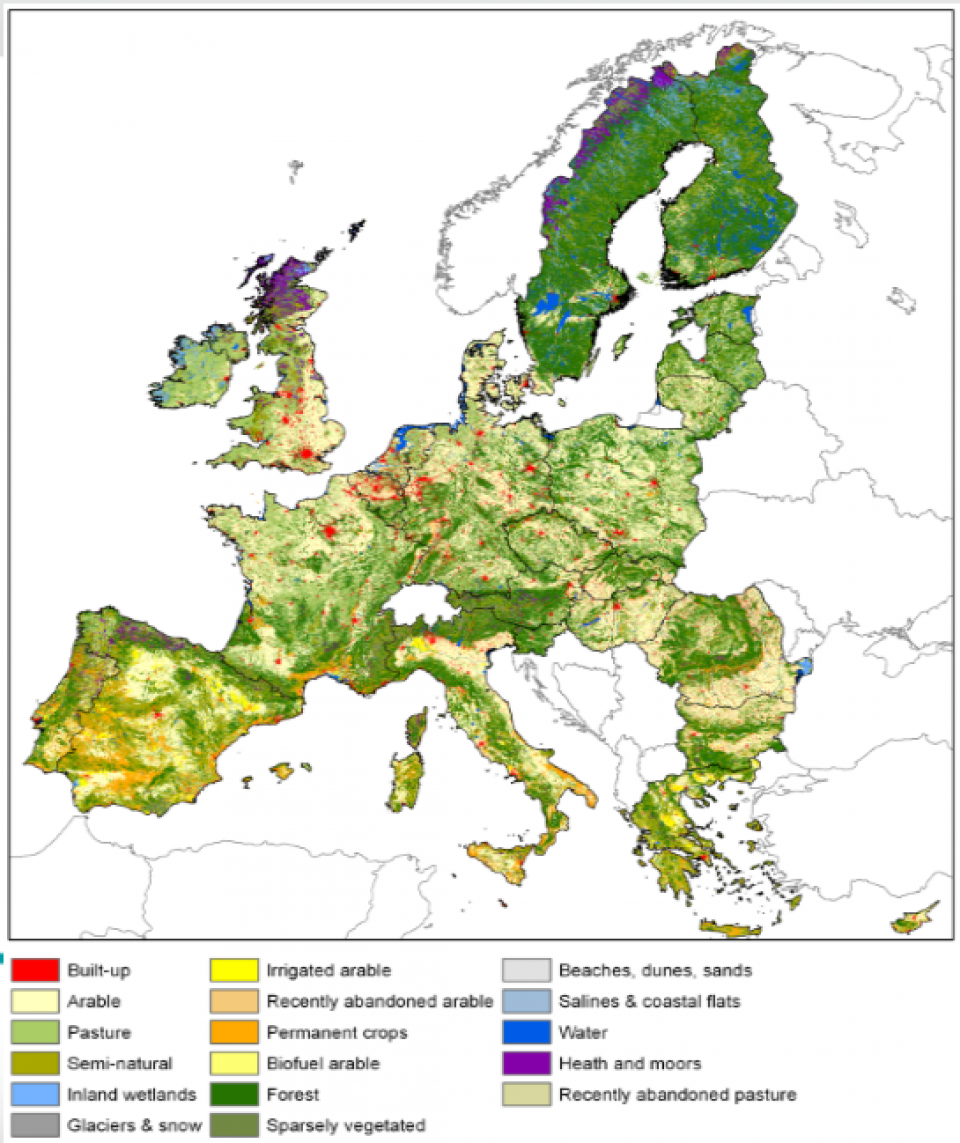
The European Union
Evaluating how recent and forthcoming EU policy developments affect the levels of ecosystem services (ES) and natural capital (NC) in Europe. Many of Europe's natural habitats and species are in decline. While the EU has a number of policies in place to safeguard habitats and species, losses are ongoing for many habitats, species and associated ecosystem services.
- Research, particularly on ecosystem services mapping and on No Net Loss/offset policy assessments is informing policy at the EU scale (for example, as input to the EU No Net Loss Initiative).
- Demonstrate the potential effectiveness of policy measures to avoid, minimize and offset impacts on (semi)natural habitats across Europe and underlying factors of success or failure, related to land-policy interactions.
- Test priority areas identification methods for ecosystem services, considering ecosystem services demand and flow to inform decision making.
Land use modelling can be applied at regional to global scales (see CLUEScanner, CLUMONDO ), with context specific input data.
The ecosystem services indicators can be applied at regional to EU scales, with context-specific input data (see respective publications).
Prioritization methods can be applied at regional to global scales (see Zonation ), but need context specific data about biodiversity and/or ecosystem services and costs of conservation actions.
Business-as-Usual scenarios of land use change in Europe have widespread negative effects on ES/NC supply (Tucker et al. 2014; Schulp et al. 2016).~Policy measures to avoid, minimize and offset impacts on (semi)natural habitats are projected to be effective in reducing impacts across the EU, although fully meeting no net loss is very challenging. The effectiveness of policy measures changes across the EU, and multiple mechanisms are responsible for this. See Schulp et al (2016).~When applied appropriately, biodiversity offsets are one solution to widespread, poorly-compensated biodiversity loss (Quetier et al. 2015).~Accounting for the demand of ecosystem services is essential in the identification of priority areas for ecosystem services (Verhagen et al. 2017)~
